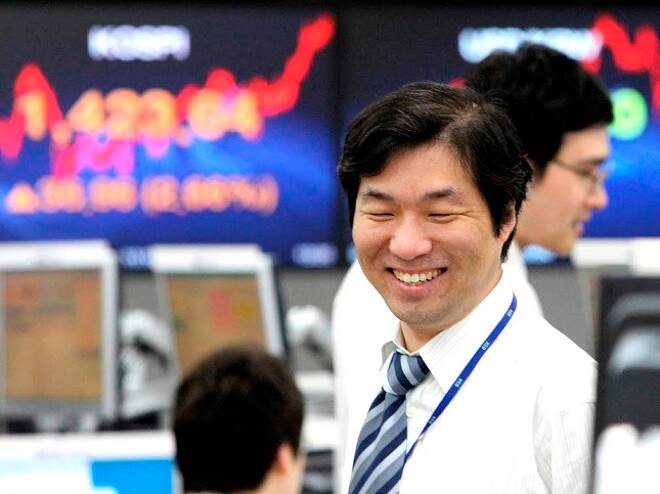Advertisement
Advertisement
Global Markets Mixed In Thin Holiday Trading, Eu Bourses Closed, Traders Eye Politics And Bear Market Conditions
By:
US markets were indicated to open higher on Wednesday while Asian markets were mixed as thin holiday trading conditions continue to dominate price action.
Asian markets were mixed as thin holiday trading conditions continue to dominate price action. The Japanese Nikkie led the region with a gain of 0.90% but the advance did not alleviate bear-market conditions for the island nation. The Japanese Nikkei shed about -5.0% on Tuesday while western markets were closed for Christmas and are now more than -20% off of its peak set earlier this year.
Asian Markets Closed Mixed In Thin Holiday Trade
Korea’s Kospi index was the biggest declining bourse in the region with a loss near -1.30%. The Kospi was weighed down by weakness in the tech sector that was in turn led by Samsung Electronics. Samsung is under pressure from ailing global trade relations, tariffs, and slowing global growth and likely to see lower prices for its shares in the near-term.
The Australian ASX and Hong Kong Heng Seng indices were both closed for the post-Christmas Boxing Day holiday. They and other Boxing Day affected markets, will reopen for business December 27th.
European Markets Closed For Boxing Day
European markets were closed on Wednesday for the Boxing Day holiday and scheduled to reopen Thursday, December 27th. Traders in this region will be on alert for several items including news on the heavily criticized Theresa May Brexit deal, US/Sino trade relations, slowing global growth outlook, and US politics. It is very little in the way of official all-EU economic this week but there are several reports from member-nations like Spanish and German CPI for traders to watch for.
Politics, Slowing Growth, And Bear-Market Conditions In The US
US markets were indicated to open higher on Wednesday but the advance did little to erase Monday’s steep losses. The broad market S&p 500 is now almost exactly 20% off of its highs set earlier this year and on the brink of full-blown bear-market conditions. The 20% mark is near the 2352 level and may be broken this week if selling resumes in earnest. A move below 2352 would signal the end of the longest bull market in history and could lead the market much, much lower in 2019.
Reasons for the sell-off are many but topping the list is fear of slowing global growth that has been exaggerated by the FOMC and President Donald Trump. On the FOMC side of the equation, US economic growth has been brought to a standstill by rising interest rates. The Fed has been hiking a quarter point per fiscal quarter over the past 18 months which, along with Quantitative Tightening (bond sales, FOMC balance sheet unwind), equals a 3.0% increase in effective rate increases and well above the slow, gradual pace that has been indicated by the FOMC since the time of Ben Bernanke.
On the growth front, FOMC interest rates and ailing global trade conditions have the market on edge. While there is an indication that growth will slow there is little indication of full-blown recession which makes the sell-off a fear-driven event. In this market watchers opinion, the S&P 500 has approached bear-market conditions on a self-fulfilling prophecy that may, in fact, lead to the recession; if everyone gets ready for recession is what everybody is going to get.
About the Author
Thomas Hughesauthor
Thomas has been a professional options trader and investor since October 2005. At that time, Thomas was introduced to financial markets, technical analysis, and financial market analysis. He tracks economic data from the worlds leading economies, corporate earnings, equities, currency, commodities, and cryptocurrencies.
Advertisement
